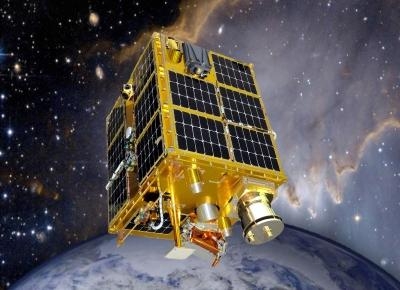Sun, Apr 07, 2013
Research Vessels Can Be As Small As A Four-Inch Cube
NASA is seeking small spacecraft technology project proposals from U.S. colleges and universities that would like to collaborate with agency researchers.

Small spacecraft, or smallsats, represent a growing field of space research and operations in which universities often have led the way in technology development. Smallsats, some of which are as small as a four-inch cube, are not expected to replace conventional spacecraft, but sometimes can provide an alternative to larger, more costly spacecraft. Smallsats can serve as platforms for rapid technology testing or specialized scientific research and exploration not otherwise possible. Smallsats also can be developed relatively quickly and inexpensively, and can share a ride to orbit with larger spacecraft.
"This new opportunity will engage university students and graduate researchers in advancing technology of value to NASA and the nation, and help strengthen our high-tech work force," said Andrew Petro, program executive for the Small Spacecraft Technology Program at NASA Headquarters in Washington. "There is a vibrant small spacecraft community emerging within America's universities and NASA is taking steps to increase our collaboration with that community. The universities will benefit from the deep experience NASA has in space research and technology, while NASA will benefit from fresh ideas and cost-conscious innovation at the universities."

NASA expects to competitively select approximately 10 proposals. Each team will form proposal partnerships with researchers from any of NASA's field centers. Awards for each project will include as much as $100,000 ($150,000 for teams of more than one school). Proposals submitted in response to this NASA cooperative agreement notice are due June 5.
In addition, NASA will fund the time for NASA employees to work with each selected team. Project funding is for one year with the potential to continue for a second year. Proposed projects could include anything from laboratory work to advance a particular spacecraft technology to flight testing of a new smallsat. For example, projects might focus on a technology area such as propulsion, power or communications, or on a smallsat capability, such as formation flight or satellite rendezvous.
(Pictured: NASA FASTSAT SmallSat)
More News
Also: Horizon Picks P&W PT6A, Army Buys 3 EagleNXT, First Hybrid-Electric Regional, Army Selects AEVEX Anduril Industries’ YFQ-44A Collaborative Combat Aircraft was flown>[...]
While Flying North Along The Beach At About 300 Ft Above Ground Level, The Pilot Reported That The Engine RPM Dropped To About Idle On September 28, 2025, at 1126 eastern daylight >[...]
Aero Linx: European Association of Aviation Training and Educational Organisations (EATEO) Welcome to the “ European Association of Aviation Training and Education Organizati>[...]
On-Course Indication An indication on an instrument, which provides the pilot a visual means of determining that the aircraft is located on the centerline of a given navigational t>[...]
“It also gives us the hard data we need to shape requirements, reduce risk, and ensure the CCA program delivers combat capability on a pace and scale that keeps us ahead of t>[...]
 Airborne-NextGen 11.04.25: Anduril YFQ-44A, Merlin SOI 2, UAV Rulemaking Stalled
Airborne-NextGen 11.04.25: Anduril YFQ-44A, Merlin SOI 2, UAV Rulemaking Stalled NTSB Prelim: Elmore Travis C Searey
NTSB Prelim: Elmore Travis C Searey ANN's Daily Aero-Linx (11.03.25)
ANN's Daily Aero-Linx (11.03.25) ANN's Daily Aero-Term (11.03.25): On-Course Indication
ANN's Daily Aero-Term (11.03.25): On-Course Indication Aero-News: Quote of the Day (11.03.25)
Aero-News: Quote of the Day (11.03.25)




